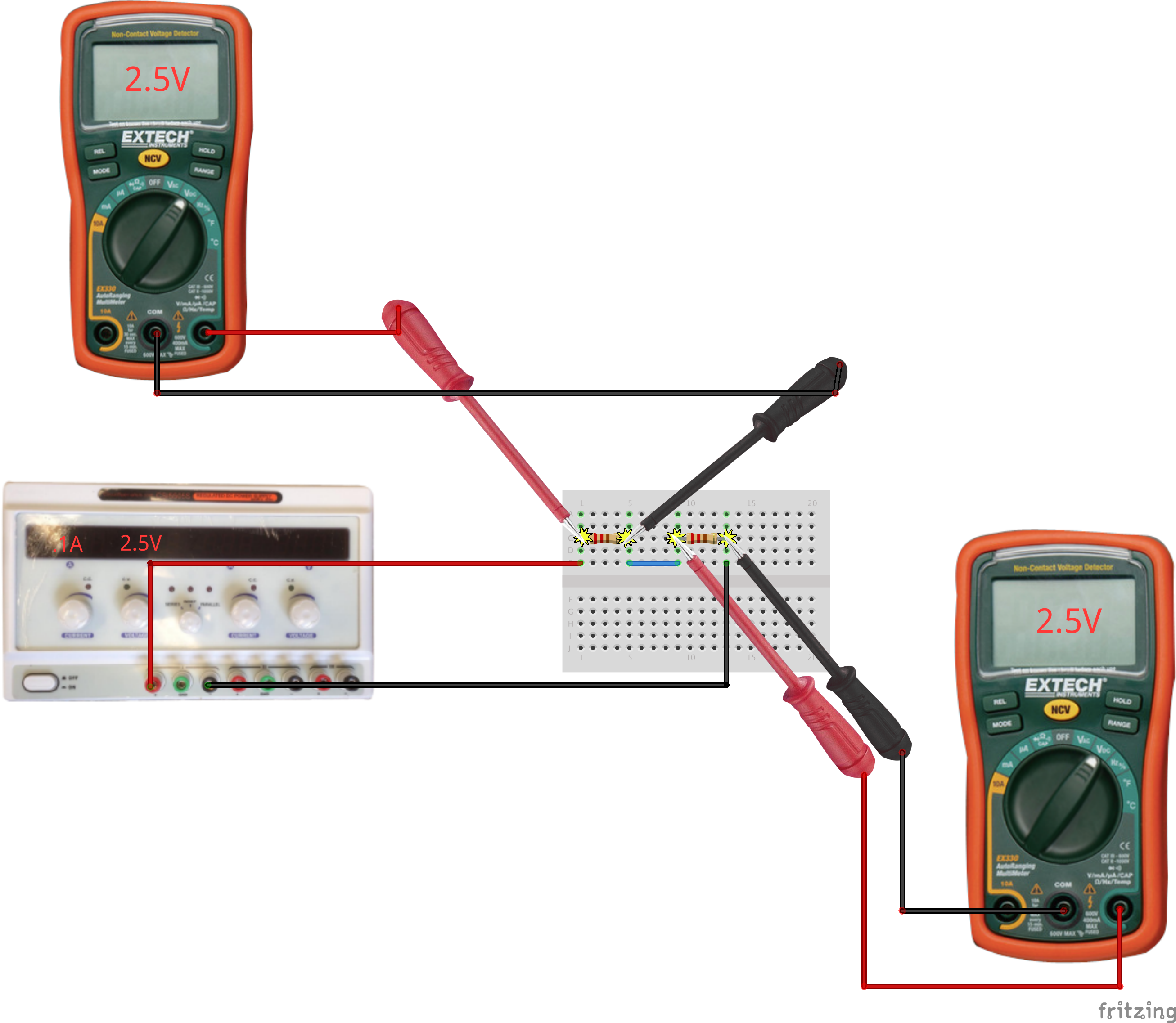Measure voltages and compute current flow in a resistive voltage divider.
Many sensor circuits we use will be built around an arrangement of series resistances called a voltage divider. This is a fundamental construction will will appear again and again.
Two resistors in series form a single current pathway, so a voltage applied across the pair will cause the same current to flow through each of them. However, the voltage drop across each resistor resulting from that current is proportional to the resistance (V = i * R), so the voltage at the intermediate node depends on the relative resistances. In the simplest case, if both resistances are the same, the voltage in the middle will be the average of the voltage at each end.
We will use the voltage divider structure to allow a variable resistance (e.g. sensor or switch) to control the voltage at the intermediate point. This is useful for us because the analog-to-digital converter on the Arduino senses applied voltage.
Also see Wikipedia.

